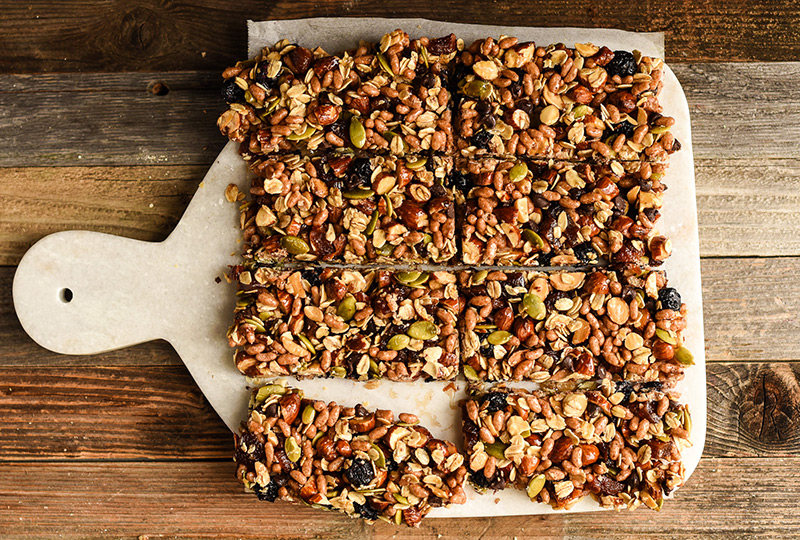Energy bars weren’t meant to become a mainstream sensation in India. Originally tucked away in the corners of fitness stores and gym bags, these portable protein packs were once exclusively the domain of serious athletes and bodybuilders. Today, urban millennials and busy professionals are driving the demand for energy bars, seeking quick, nutritious snacks that fit into their fast-paced lifestyles. Together, they represent a thriving Rs. 600 crore market that’s reshaping how India thinks about convenient nutrition.
The transformation wasn’t planned or predicted. Instead, it emerged organically from shifting lifestyle patterns, growing health consciousness, and urbanization that demanded nutritious, on-the-go food solutions. With 13% annual growth projected through 2030, the category has evolved far beyond its niche fitness origins.
A Fusion of Local Flavors and Global Trends
Visit any modern Indian supermarket today, and you’ll find entire aisles dedicated to energy bars. What began as bland, protein-heavy blocks has evolved into a diverse array of flavours that cater to Indian palates – from chocolate almond to berry-infused variants. This evolution reflects deeper changes in urban Indian lifestyles, where traditional meal patterns are giving way to flexible, nutrition-focused eating habits. The numbers tell a compelling story. While the global energy bar market stands at $5.3 billion, India’s current Rs. 600 crore market suggests massive untapped potential. Compare India’s per capita consumption of less than 1 kg annually to America’s 6.5 kg, and the growth runway becomes clear.

Perhaps the most fascinating aspect of India’s energy bar revolution is its growing alignment with traditional dietary preferences. In a country with deep-rooted vegetarian traditions, plant-based protein bars have found particularly fertile ground. The global plant-based food industry, currently valued at $44 billion and projected to reach $77 billion by 2025, has created perfect conditions for innovation in this space.Local manufacturers are increasingly turning to India’s rich repository of nuts, seeds, and plant-based proteins. Almonds, chia seeds, quinoa, and flaxseeds are becoming star ingredients, offering nutritional profiles that match or exceed their animal-based counterparts. This fusion of modern convenience with traditional ingredients has helped energy bars transcend their Western origins.
Challenges and Opportunities
Step into an Indian energy bar production facility today, and you’ll witness a remarkable fusion of food science and traditional ingredients. Manufacturers are experimenting with almond flour, cashew butter, and indigenous superfoods to create products that are both nutritious and culturally relevant. The focus has shifted from merely providing protein to offering holistic nutrition that includes fibre, healthy fats, and micronutrients.The market has naturally segmented itself. Beyond basic energy bars, consumers can now choose from meal replacement bars, fibre-rich digestive options, and immunity-boosting variants. Each innovation opens new market opportunities while addressing specific consumer needs.
While international brands dominate global markets, Indian manufacturers have carved out their own space. Homegrown brands have established a strong foothold in the market by offering high-protein, clean-label energy bars tailored to Indian taste preferences. Local brands have succeeded by understanding unique Indian preferences and dietary requirements, often offering products with higher protein content at more accessible price points. Unlike early versions that focused solely on nutrition, today’s energy bars prioritize taste and texture, incorporating familiar Indian flavors like saffron, coconut, and jaggery to enhance appeal.
Yet challenges remain. Distribution infrastructure needs strengthening to reach beyond urban centres. Consumer education about nutritional benefits requires ongoing investment. Cold chain logistics, crucial for preserving product quality, demands significant improvement.

The future of India’s energy bar market extends beyond simple growth metrics. As consumer awareness grows and health becomes a priority, the category is poised for both expansion and evolution. Innovation will likely focus on sustainable sourcing, improved shelf stability, and new functional benefits. The next wave of energy bars may integrate Ayurvedic ingredients like ashwagandha and turmeric, catering to the growing demand for functional, holistic nutrition.
For the food industry, India’s energy bar transformation offers valuable lessons in category development. Success requires more than just adapting Western products – it demands understanding local preferences, respecting cultural dietary patterns, and innovating with indigenous ingredients.The revolution in India’s energy bar market is still unfolding. As urban lifestyles continue evolving and health consciousness grows, these convenient nutrition sources are becoming more than just snacks – they’re becoming part of India’s modern food culture. The challenge now lies in scaling sustainably while maintaining quality and authenticity.




